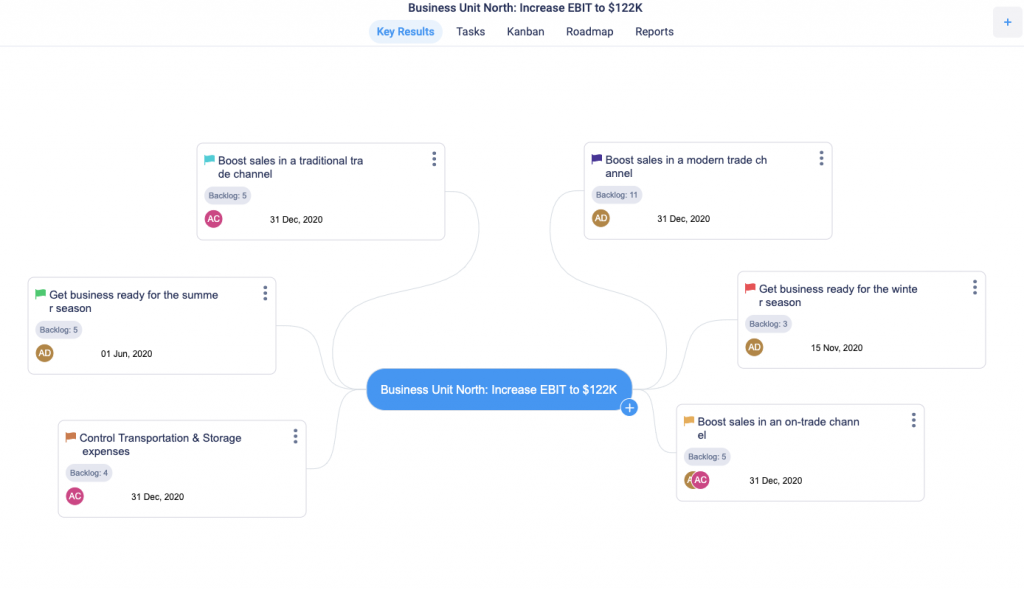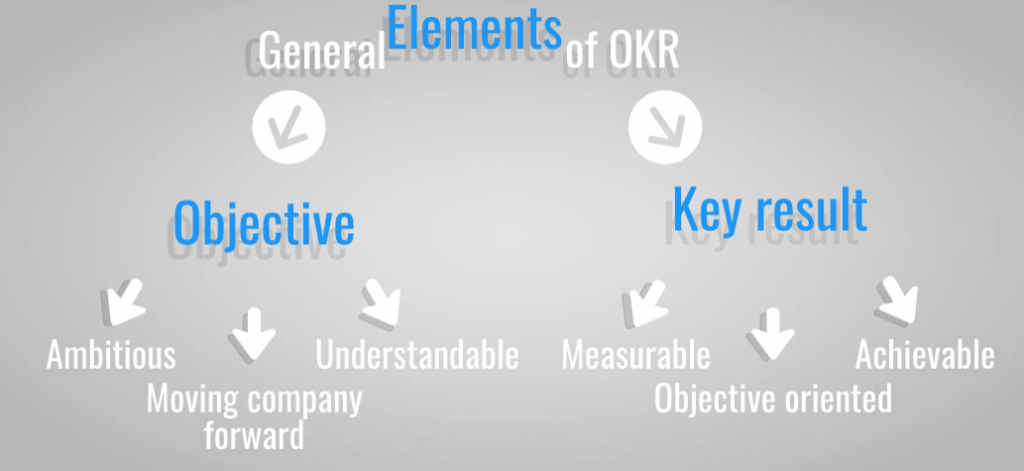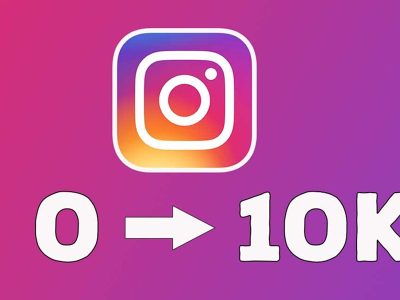OKR(Objective and Key Result) is extremely popular these days. But, are we using it right? Let’s figure it out.
Project managers often use this method to implement one general system of controlling company goals and objectives.
 This is how setting OKR looks like in “Goals” by KeepSolid.
This is how setting OKR looks like in “Goals” by KeepSolid.
OKR helps companies set one big objective for all the members and then divide it into several tasks which can have up to 5 quantifiable parameters to track result through a given period.
Usually, frequently set OKR’s are tracked and controlled – recommended period starts from 3 months.
Generally, OKR formula looks like: “I will do ____ measured in_____”.
The trick about this formula is simple, every task, goal and objective needs to be “measurable” to control one’s progress. As an example, the bad one sounds like: “Make 10% more sales”. The proper one looks like this: “Our task is to raise sales 10% more than the previous quarter”. Because, as written earlier, everything should be measurable to make the control process easier.
So, speaking about OKR we need to talk about main components of this method.
Let’s start with the bread and butter of the whole method – Objective.
Accurately set objective is the most necessary part of all the story. Objective is the description of the Goal, the source of creativity and “the north star” of any team which uses OKRs.
Setting up an Obj. is a very accurate job because it must be very clear and simple to understand to give the right destination. Without these parameters, it will be hard to set proper Key results.
So after you set an Objective, you’d better try to divide it into several Key results to make this system work properly. Generally, Key results are a set of metrics that measure your progress towards the Obj. As figured out before, they should implement some sort of numeric equivalent to make tracking easier.
To sum it up, let’s imagine a simple situation: The objective will be to “Attract more people to our website”.
How will we measure this? We need to implement some measurable Key results:
- Reduce the bounce rate from A to Z
- Improve page opening speed from A to Z
- Reduce the quantity of advertising from Z banners to A
Now we have all the needed parameters to track our Objective’s progress.
Core Concept of OKR
There is no single way to use OKR, it can vary from companies, in differrent teams. But, there are some common core concepts:
- AMBITIOUS GOALS
The thing about this concept is that your company or team should never reach 100% of the goal. If this happened, it means that your goal was too easy.
If your goal is unreachable, the team will have to rebuild their way of achieving this goal, learn something new and get even stronger as professionals, which will, in turn, create big opportunities for the company.
- BIDIRECTIONAL GOAL SETTING
OKR is not about “top-down” model of setting goals.
As Lazlo Bock, Google’s former VP of People Operations, mentioned that every company needs goals to get better performance, but spending hours and hours cascading them through all the company, however, does not.
Ideally at first company needs to set down the main Objective and then every team should set their own OKR depending on their specifics. This concept makes the process easier because you won’t waste your time trying to cascade goals.
- AGILE GOALS
OKR is not about static planning, it helps to respond much quicker and simplifies problem-solving.
But working with OKR’s sometimes is not that simple.
Let’s take a look at top mistakes when working with this method:
- EXPECTING INSTANT RESULT
Pretending to be a common mistake for everyone who are trying to implement OKR for the first time.
OKRs are a bad option if you cant invest some time into them. It takes time to introduce this method, you can even not face any profit for the few cycles, but you surely will admit some benefits of it in the long run.
- MAKING LOTS OF THEM
The main focus of this big method is to keep everybody focused.
Ideally, you don’t want to create more than 3 Objectives which are divided into 3-5 Key Results, you’d better keep focus on your team.
OKR is not going to replace your daily to-do list or management.
- STARTING WITH TOO CHALLENGING OBJECTIVES
Here we have two types of objectives:
- Moonshots- which you plan to achieve 60-70%
- Rooftops- that you plan to achieve 100%
Setting only “moonshots” may result in demoralizing your team, which will cause failure and further problems. You should give your team kind of “adaptation” time, a good choice will be setting only rooftops through 1 or 2 cycles.
If you have a good understanding of what you are doing, OKR can get your company/team to a different level of productivity. Just remember to be patient and focused when introducing this system.
So, now you know all about OKR, but there is one thing left, how to make proper OKR’s?
Before you write OKR, you should think about what you want to accomplish.
Think about your objective:
- Is it understandable?
- Is it inspiring or not?
- Will it help your company move forward?
- Have you set time brackets?
- What’s the time scope of this objective(quarter, year)?
And let’s remember the tip about writing Key Results:
Key results describe outcomes and results, not activities, and are measurable indicators of success. As such, they must be quantifiable in order to demonstrate how much of an objective has been achieved.
Now you know everything you need to start introducing this interesting method.
Hope you find this piece interesting and useful to get your business to a new level of productivity!


















Comments